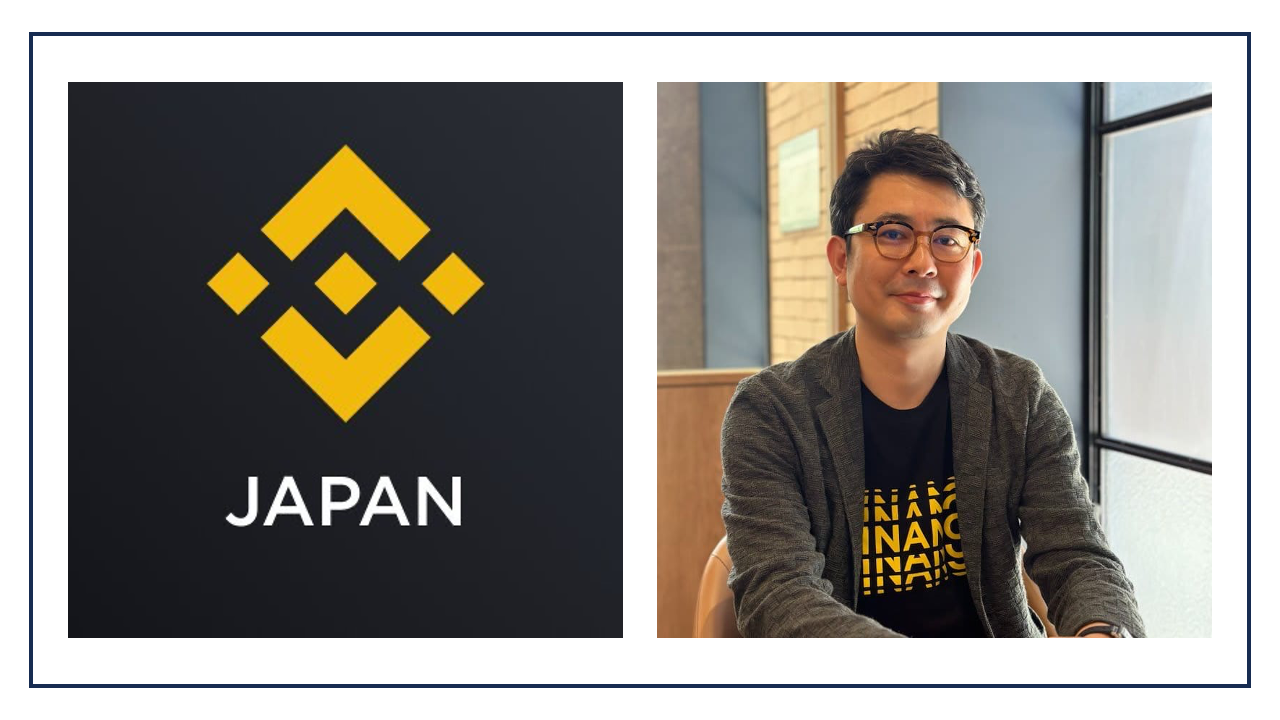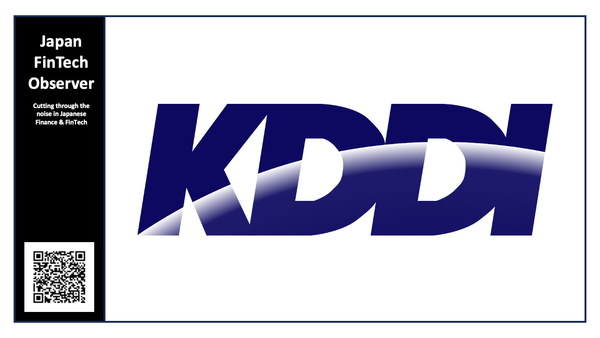Binance Japan: 2024 Retrospective & 2025 Outlook

Binance Japan hosted a press briefing today, with CEO Takeshi Chino reviewing the overall market in 2024, as well as Binance Japan accomplishments, and providing an outlook into the next year.
Key Market Shift in 2024: Institutional Adoption
The most significant development in 2024, according to Chino, has been the changed perception and increased involvement of professional and institutional investors in the cryptocurrency market. This is primarily attributed to the approval and launch of spot Bitcoin and Ethereum ETFs in the US. This development, Chino argues, has facilitated the entry of institutional investors into the crypto space.
Previous Institutional Skepticism
Chino acknowledges past skepticism among institutional investors who viewed cryptocurrencies as lacking intrinsic value, akin to a speculative game or even gambling. This perception, he notes, stemmed from a traditional finance perspective.
ETFs as a Catalyst
The introduction of ETFs, according to Chino, has marked a turning point. The inflow of institutional money into the ETF market, along with regulatory acceptance of crypto as an asset class, has instilled greater confidence and spurred institutional participation. The fact that these ETFs are listed on prominent exchanges like the NYSE and Nasdaq, central hubs of global finance, has added to their legitimacy.
Significance of Spot ETFs
Chino clarifies that while futures-based ETFs existed prior to 2024, they presented complexities due to their derivative nature and price discrepancies from the underlying spot market. The approval of spot ETFs has simplified the investment process and made cryptocurrencies more accessible to institutional players.
Global Impact of US Developments
The US developments have had a ripple effect on the global market, influencing the perspectives and regulatory discussions in other countries, including Japan.
Hope for Japanese ETF Approval
Chino expresses his hope that Japan will also approve spot Bitcoin ETFs in the coming year, noting that many countries have already recognized cryptocurrencies. He highlights increased interactions with institutional investors, reflecting a growing acceptance of crypto as an asset class. Investors are now focusing on selecting quality products within the crypto market, illustrated by the emergence of diverse ETFs.
Bitcoin as Digital Gold
Chino mentions the growing acceptance of Bitcoin as "digital gold," suggesting its inclusion in investment portfolios for diversification. He emphasizes that regulation and the increasing maturity of the crypto industry further enhance its appeal to traditional investors. However, he cautions against treating cryptocurrencies the same as traditional financial products due to the inherent differences in their risk profiles. He advises investors to manage risk effectively while incorporating crypto into their portfolios.
Domestic Crypto Landscape in Japan
Chino briefly touches upon the domestic crypto market in Japan, citing statistics from the Japan Virtual and Crypto assets Exchange Association (JVCEA) indicating over 10 million crypto accounts in Japan, exceeding 11 million recently. This, he notes, reflects the growing adoption of cryptocurrencies, despite the market's still relatively small size. He also mentions the progress in regulations, with stablecoin legislation having been established in 2023, although specific application guidelines are still awaited.
Binance Japan's Achievements and Growth
Chino shifts focus to Binance Japan's performance, expressing satisfaction with the past year. He shares details about the exchange's listed tokens, currently numbering 56, significantly exceeding competitors. He attributes this success to Binance Group's technological prowess and Binance Japan's legal and compliance framework, enabling smooth communication with regulators. This, he argues, has facilitated the addition of new products and services.
Recent Product Launches
He highlights recent launches like Binance Pay, a payment service allowing free transactions between Binance users, and a partnership with Circle, aimed at integrating the USDC stablecoin. He also mentions the launch of Launchpool, a popular service from Binance Global, now adapted for the Japanese market and approved by regulators.
Focus on Binance Pay
Chino elaborates on Binance Pay, describing it as a settlement service that allows Binance Japan users to send and receive cryptocurrencies and, eventually, stablecoins, freely and without transaction fees. He mentions its popularity abroad, particularly for retail payments, emphasizing its use with QR codes, similar to other popular payment systems in Japan. However, he acknowledges limitations in Binance Japan's implementation due to regulatory restrictions, specifically the travel rule, which limits cross-border transactions. For now, the service is restricted to transactions between Binance Japan users, with plans to expand its scope later.
Future Plans for Binance Pay
Chino outlines plans to expand Binance Pay for retail settlements, recognizing the potential challenges and criticism regarding the volatility of cryptocurrencies and tax implications. However, he believes the increasing value of Bitcoin and user demand justify this expansion. He envisions incorporating more domestic retailers into the Binance Pay ecosystem, which would potentially facilitate payments from overseas Binance users visiting Japan.
Binance Launchpool in Japan
Chino explains the concept of Launchpool, a service designed to promote new tokens. New tokens listed on Binance Global are airdropped to Binance users through Launchpool, providing a marketing opportunity for projects and rewards for users. While this system has been successful globally, its direct implementation in Japan faced regulatory challenges. After consultations with legal experts and regulators, a modified approach was adopted where BNB is distributed to users instead of the new tokens directly. Users who lock up their BNB on Binance Japan receive additional BNB proportional to their holdings, providing a risk-free way to participate in new token launches.
Partnership with Circle
Chino discusses the recent global partnership between Binance and Circle, emphasizing its implications for Japan. As part of this partnership, Binance Japan aims to facilitate the circulation of USDC as an electronic payment instrument. This requires approval from Japanese regulators for USDC to be recognized as a foreign electronic payment instrument, as well as the recognition of Binance Japan as an electronic payment instrument trading business. While this is a prerequisite, Chino emphasizes the potential of this partnership to maximize its benefits in the Japanese market, including the introduction of USDC-denominated transactions.
Strategic Bitcoin Holdings by Companies
Chino notes the trend of companies holding Bitcoin as part of their treasury strategies, citing MicroStrategy as a prominent example. MicroStrategy, originally a business intelligence software company, has become known for its significant Bitcoin holdings. Its inclusion in the Nasdaq 100 index highlights the growing mainstream recognition of Bitcoin as a strategic asset. Chino mentions Japanese companies like Nexon and Metaplanet following similar strategies. He expects this trend to grow further, providing further tailwinds for the crypto industry.
2025 Outlook: Mass Adoption Through Existing Platforms
Chino presents his outlook for 2025, focusing on mass adoption. While last year's theme was the integration of traditional finance with crypto, the coming year's focus will be broader accessibility. Chino believes mass adoption requires integration with existing technologies, rather than complex onboarding processes like setting up wallets and managing private keys. He envisions a scenario where users interact with crypto through familiar platforms, like messaging apps, without realizing they are using blockchain technology. This, he believes, will lead to more organic growth and adoption. He cites examples of LINE and Telegram, which are integrating blockchain technologies and decentralized applications into their platforms. He expects this trend to accelerate, driving broader adoption and attracting new users to the market. This integration will be further strengthened by increasing participation from companies and even government entities, with potential applications in public services using blockchain technology.
Q&A Session
The presentation concludes and transitions into a Q&A session. Several participants ask questions related to:
- Public service integration of blockchain: Chino acknowledges this is still in the early stages, with many local governments focused on understanding blockchain technology. He sees potential in using NFTs and other examples to demonstrate the technology's use cases.
- Binance and Circle's partnership (vs. other stablecoins like USDT): Chino explains the rationale behind focusing on USDC, citing Circle's proactive approach and progress with regulators regarding stablecoin regulations, particularly in Europe with the MiCA framework. This partnership aligns with Binance Japan's goal of providing stablecoins that are usable, compliant, and accepted globally.
- JPY-denominated stablecoins: Chino clarifies that Binance Japan is not limiting itself to USDC and acknowledges the potential of JPY-based stablecoins like JPYC. While the company is open to exploring such options, the current focus remains on globally recognized and regulated stablecoins.
- Japan's stablecoin adoption: Chino acknowledges the dominance of USDT but emphasizes the need for compliant stablecoins for the Japanese market. This is a key driver for the partnership with Circle.
- Global implications of the Circle partnership and future plans: Chino states that the partnership is driven by the changing regulatory landscape, especially for stablecoins. The focus is on compliance, making USDC a strategic choice. The partnership aims to offer a usable stablecoin for both domestic and international transactions, though further development and regulatory approvals are necessary for broader implementation.
Please follow us to read more about Finance & FinTech in Japan, like hundreds of readers do every day. We invite you to also register for our short weekly digest, the “Japan FinTech Observer”, on LinkedIn, or directly here on the platform.
We also provide a daily short-form Japan FinTech Observer news podcast, available via its Podcast Page. Our global Finance & FinTech Podcast, “eXponential Finance” is available through its own LinkedIn newsletter, or via its Podcast Page.
Should you live in Tokyo, or just pass through, please also join our meetup. In any case, our YouTube channel and LinkedIn page are there for you as well.




